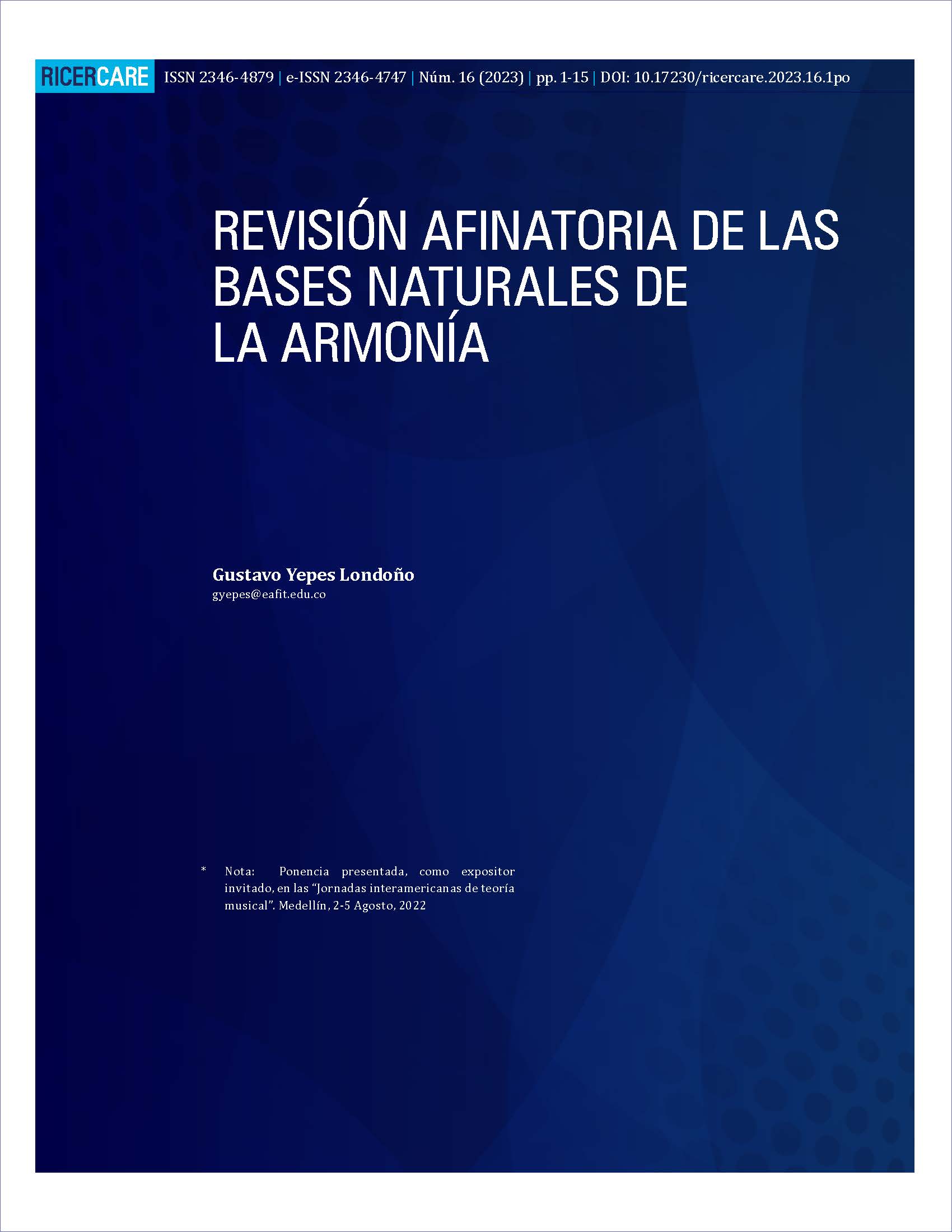Revisión afinatoria de las bases naturales de la armonía
Main Article Content
Keywords
basic tone, lengths, frequencies, harmonic tones, intervals
Abstract
Humanity has had diverse musical practices in its history, in accordance with the different cultural developments of the various countries and regions of our planet. In this research project article, we will exclusively consider the melodic gradual systems or alphabets employed by them, leaving apart the rhythmic, formal, polyphonic, instrumental, and other aspects. Some nations based their repertoire on pentatonic scales, hexatonic (whole tones) and heptatonic ones, pure or using semitonal chromatic added tones like in the medieval European examples of musica ficta; the Western music advanced from close to distant Chromaticism, since the Classic period to the end of Romanticism. In the twentieth century, some composers used microtones like those produced by the tone division by 3, 4 or even higher divisor numbers. In the Western cultures
originated or influenced by Europe, some modern composers used even a perceptually continuous not discrete spectrum, not only by means of glissandi but also by introducing some electronic devices like the theremin or some synthesizers. Another added purpose we have is offering to music teachers and students a significant contribution to the teaching and learning of that musical common practice, by reaching better explanations and proofs of the basic laws and procedures usually prescribed in books and classes of Solfege, Harmony, and Counterpoint. Those conclusions should be based on the inference realized from the repertoire of the theoretically studied period to explain the Music as art and esthesis; but also, on the prior physical scientific bases that explain the preexisting materials used by the artists to create their works.
Downloads
References
Einstein, A. e Infeld L. (2002). La Física, Aventura del pensamiento. Buenos Aires: Ed. Losada.
Forte, A. (1977). Schenker’s Conception of Musical Structure. In Maury Yeston (e d .), Readings in Schenker Analysis. New Haven and London: Yale University Press.
Jeans, J. (1968). Science and Music. New York: Dover Publications.
Michels, U. (1977). Dtv-Atlas zur Musik. München: Bärenreiter Verlag.
Rameau, J. Ph. (1722). Traité de l’Harmonie réduite a ses príncipes Naturels. Paris: Ballard, Paris.
Yepes, G. (2014). Tratado del Lenguaje tonal. Bogotá: www.autoreseditores.com.
Yepes, G. y Grupo de Investigación en Estudios Musicales (2011). Cuatro teoremas sobre la Música Tonal. Cuadernos de investigación, No. 87. Medellín: Unversidad EAFIT

